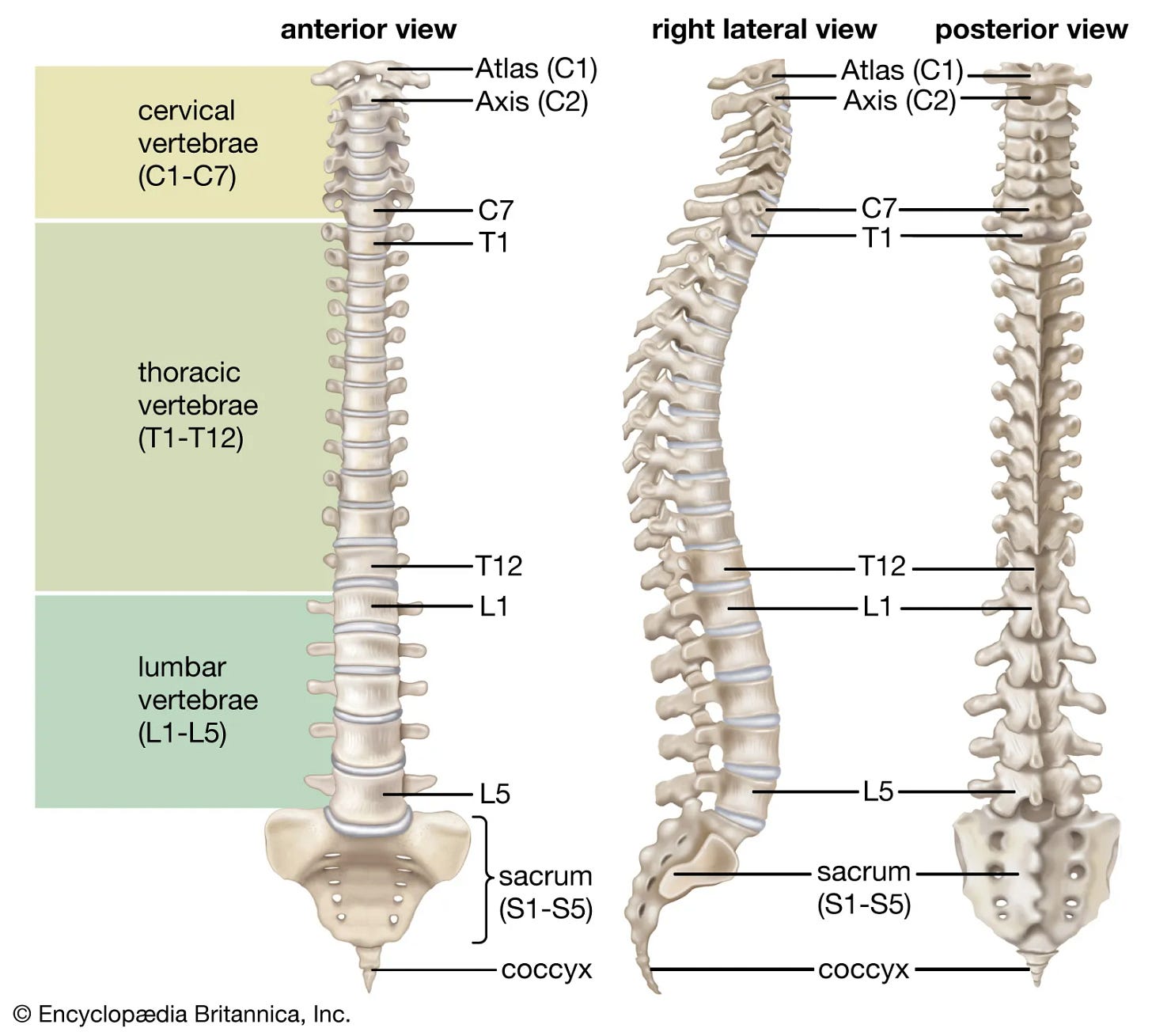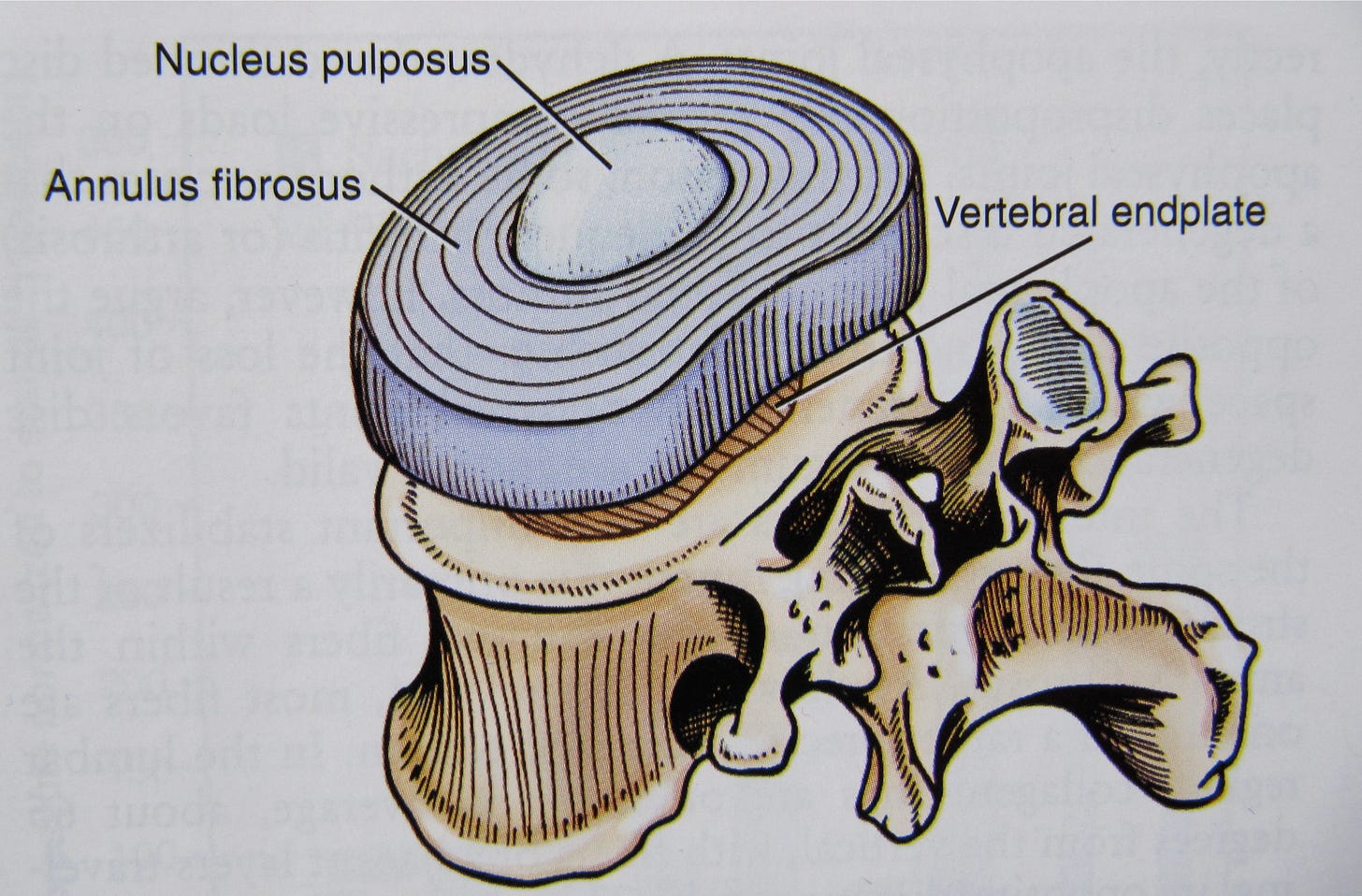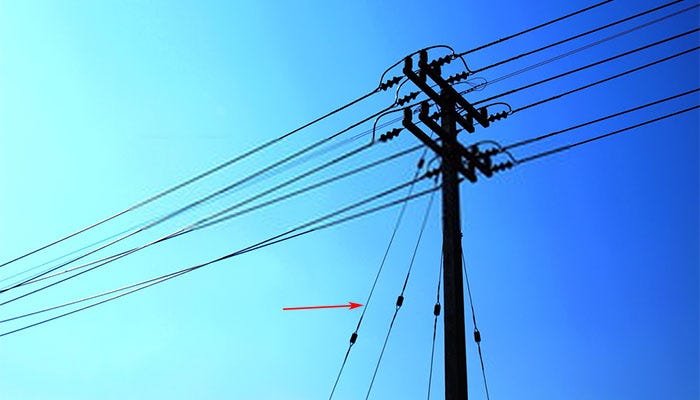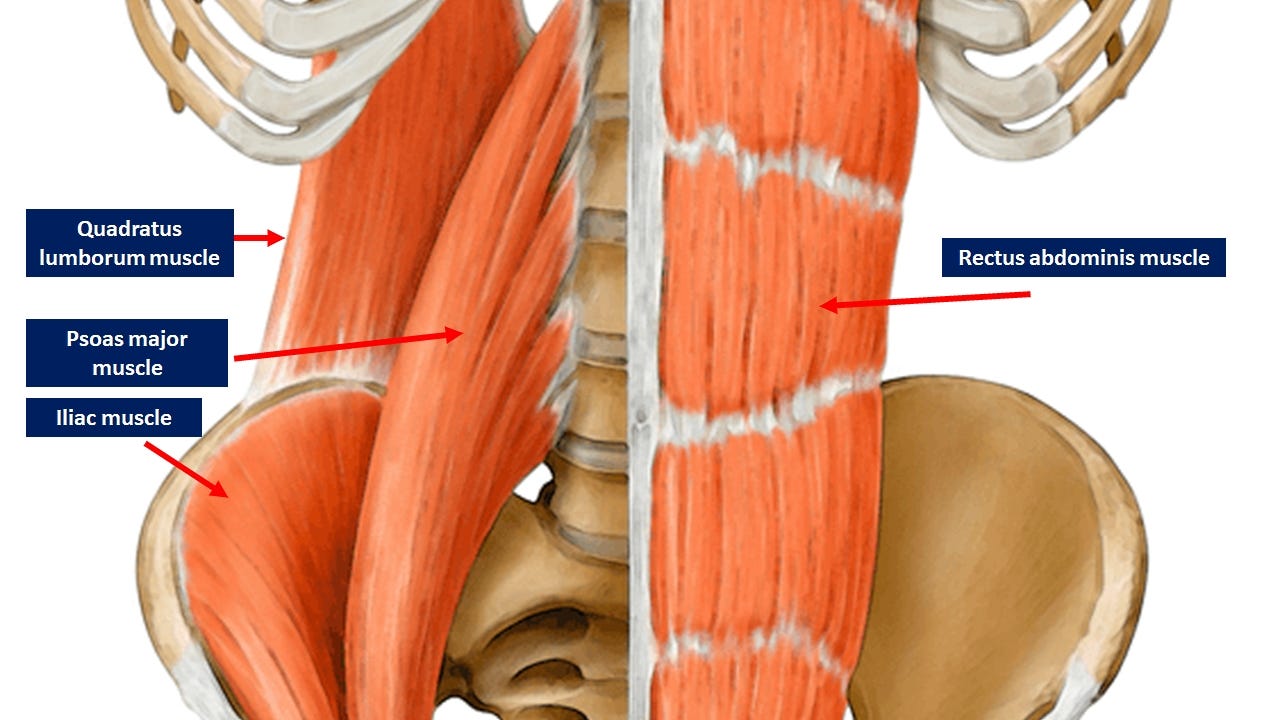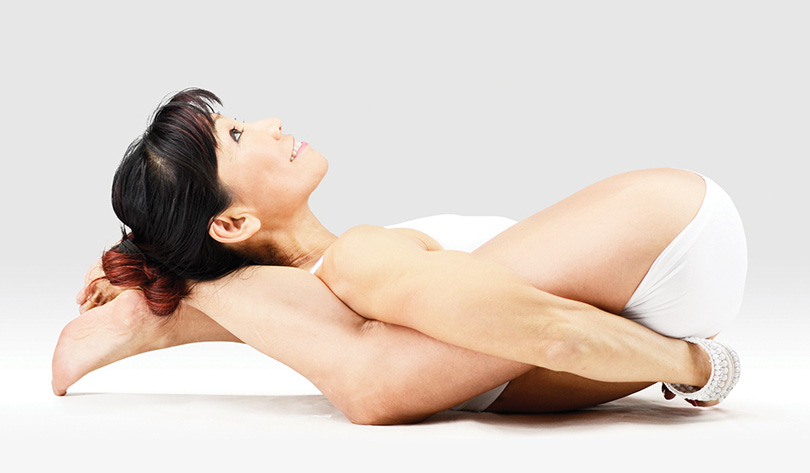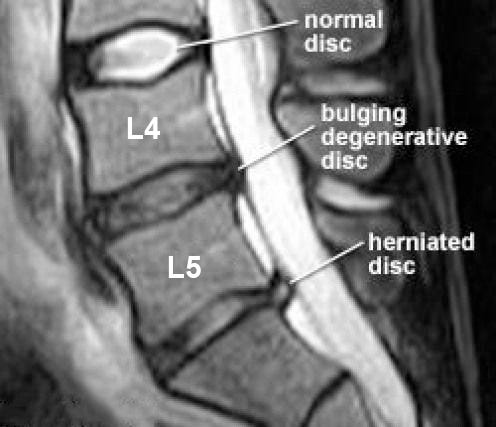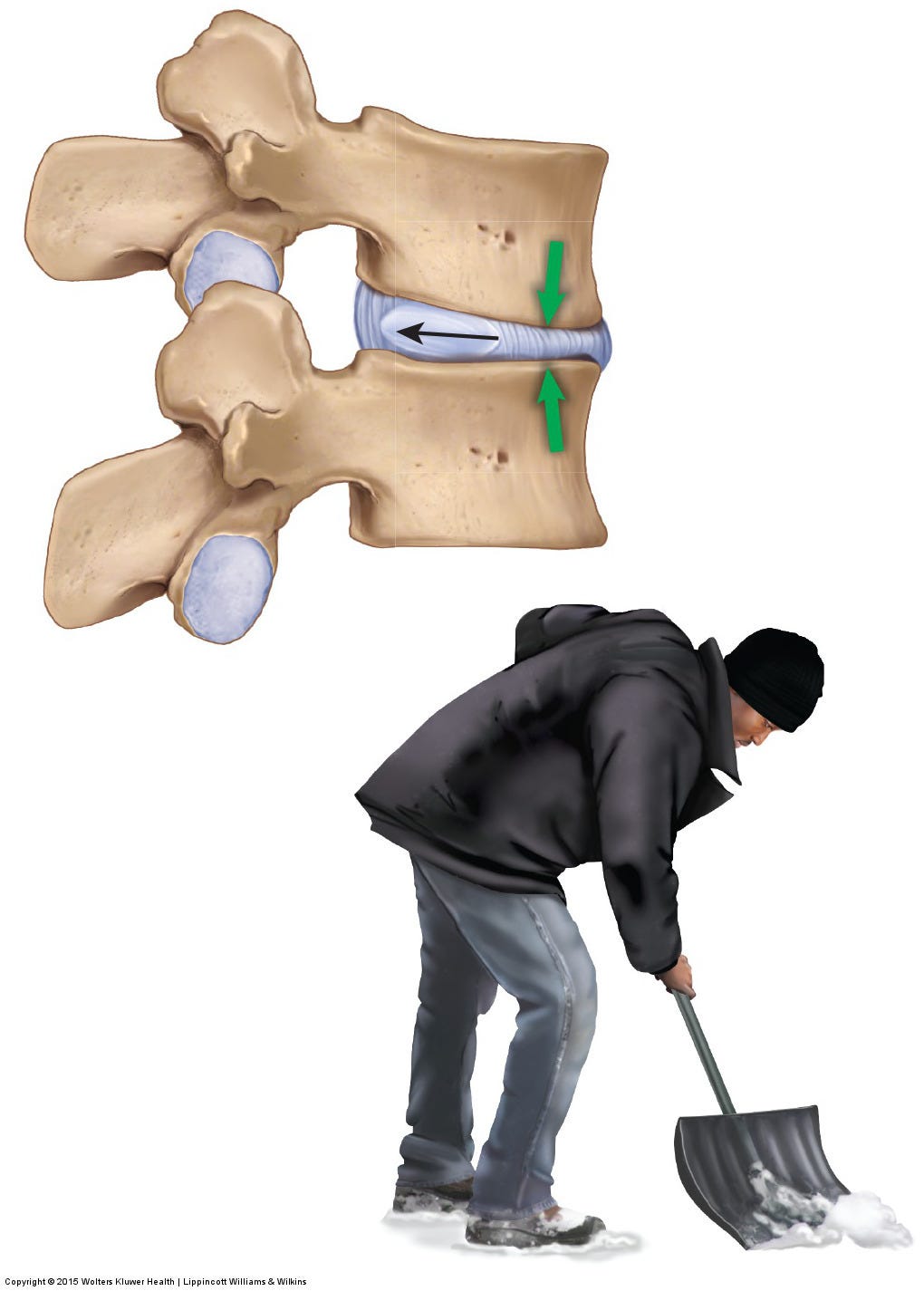Mike Tyson: “I Broke my Back.”
Jim Gray: “What do you mean by that? You…”
Mike Tyson: “My back is broken.”
Jim Gray: “What part uh uh… a vertebrae? or… or what portion?”
Mike Tyson: “Thpinal.”
Introduction
As a great sensei once said, I have the back of an “85 year old.” Truth be told, this was in early December - crippled, sidelined and deep into the eight stages of post-Jiu Jitsu grief.
I can now say, two months later, that whilst I don’t have the spine of a female gymnast, I certainly have shaved a few decades off my once geriatric spine.
I am of course speaking of my struggles with a (purported) bulging disc. I say purported as every indicator points in that direction, it nonetheless remains unconfirmed, as I’m yet to do an MRI.
Thus I present “The Thpinal Series” - a collection of short essays concerning back injuries.
This is your back rehab Bible. A route to understanding the back’s structure, function, how it’s injured and the long arc of back rehab.
In putting together the series, I’ve focused primarily on the work of the pre-eminent authority on spine biomechanics - Stuart McGill. I’ve also included advice from two amazing physios: Joana Pires (@betterflowphysio) and Tim Trevail (@blackbeltrehab), without whom I would still be crippled.
The series is also a personal account, so will be strongly biased towards diagnosing, dealing with and rehabbing lower back disorders, specifically posterior bulging discs. Rest assured though, if you’re a young scrappy fella who messed your back up after spazzing out in the gym - this probably relates to you.
Take it as a guide from someone who’s worn the t shirt, done the research and trialled and errored his way through months of rehab.
Before I begin, however, let me say it very plainly - I am NOT an authority on backs. If you have a back injury, PLEASE consult a health professional and do not just take my word from it.
Now, that’s one too many disclaimers for a Substack with only 25 subscribers, so let’s get into it.
Structure and function
Evolution took its time with the spine. Mobile enough to flex and extend, stiff enough to bear load and absorb shocks. The spine is evolutionary marvel - 33 vertebrae, 23 discs and a host of joints and musculature. Let’s dissect them one by one.
“What part uh uh… a vertebrae? or… or what portion?”
The vertebrae are the celebrities of the spine. Just as Jim Gray’s subconscious plucked the word “vertebrae” out of the ether - the vertebrae were probably the first thing that came to your mind when thinking of spines.
The vertebrae are slit into 7 cervical vertebrae (towards your head), 12 thoracic vertebrae (around your lungs) and 5 lumbar vertebrae (God knows what lumbar means but it’s in your lower back).
The vertebrae are composed of bone and an “end plate” of cartilage. In short, the vertebrae provide the rigidity for you spine to bear compressive loads and absorb shocks.
Discs
Think of the discs like cushions in between the vertebrae - soft and gooey on the inside, firm and fibrous on the outside. The soft and gooey part is the “nucleus pulposus”, a “thick phlegmy liquid” that should be contained by the “annulus fibrosus” - a rigid fibrous shell.
This balance between softness and rigidity enables the disc to deform and compress - which allows the spine to flex - approximately 6 degrees between each vertebrae.
The discs also facilitate a degree of spinal compression - but according to the science, provide less shock absorbing properties than initially thought.
Musculature
When conceptualising the torso musculature, think of a tall radio tower. In this case, the spine is the tower itself and the musculature is the “guy wires” that keep the main tower upright.
Indeed, whilst the limb muscles are designed to generate motion, the torso muscles are designed to arrest it. In essence, they can be described as stabilisers. These muscles famously include the rectus abomnis (the “six-pack” muscle), the obliques and the psoas but also include the lesser known - quadratus lumborum, rotatores and multifidus.
The truth is, however: that practically any muscle in the body is a “potential spine stabiliser.” Your spine is the physiological centre of your universe and motions as small as rotating your palms up or down will radiate force to your spine.
Without spoiling the next episodes of the series - any rehab programme focused on the spine should place a heavy emphasis on working on the musculature of the torso (dependent on the requirements of the athlete).
Willows vs Oaks
Spines are not a monolith. Consider a willow branch - supple, bendy and pliant but unable to hold firm under load. In contrast, consider an oak - rigid, sturdy and stiff yet brittle and prone to snapping.
This analogy approximates the wide discrepancies found across a population of human spines. Think of a yogi - able to twist, invert, flex and extend. Now think of a power lifter - stiff as a ramrod under the bar.
Consider now, how these respective spines might get injured. Force a yogi to squat 200kg or a powerlifter to do a yoganidrasana pose, and you’re asking for trouble.
Mechanisms of Injury
As my old Developmental Biology Prof used to tell me, “things can and will go wrong.”
In the case of the spine - every injury has a cause. Therefore, there is no such thing as a non-specific back injury.
However, you’ll seldom be able to pin your dodgy back on a single causal event. Even if you got crippled one day in the gym; in all likelihood, it took many sub-threshold insults for you to get to that point.
In my case, I did have a few crippling events - a Romanian deadlift, a Bulgarian bag spin and a box squat. However, despite flapping about on the floor after these unfortunate events - my back deteriorated the most during a sustained period of competition prep.
When preparing for the competition, it’s not like I could pin my back’s woes on a single movement or training session. It was more like a steady, sustained decline that couldn’t be reversed. Of course, the rigours of competition training had inflicted multiple sub-threshold insults to the spine that I had failed to recognise or address.
Therefore, if you’re reading this series with a dodgy back and don’t necessarily recall being crippled by a single, traumatic event - don’t worry, it’s not in your head.
Damaging the Disc
As you’ll remember from the intro, this series will be heavily biased towards Discogenic back issues. Firstly, because it’s what I’m dealing with (selfish I know) but also, because a bulging or herniated disc is a textbook overuse injury in young athletes.
When considering how a disc is damaged, let’s think about the structure. The fibrous outer layer of disc - the annulus: is composed of concentric rings of tough “type 1 collagen.” These fibres seldom tear, but If the spine is subject to repeated and/or sustained bending and compressive forces these rings may “delaminate.”
Delaminating describes the process of adjacent fibres within the same layer gradually separating apart. If this happens to the annulus, the gooey nucleus seeps out into the void - and that’s where the problems start.
Bulging vs Herniated Discs
Before discussing where exactly the problem manifests, lets define what the problem is.
In the case of a bulging disc, the gooey nucleus seeps out into the fibrous annulus - yet the annulus remains intact. For a herniated disc - the annulus ruptures and the nucleus escapes the disc completely.
As you may have guessed - a herniated disc is much more severe than a bulging disc, but in both cases - the athlete will likely experience pain when the spine is flexed or extended (depending where the bulge is), pain under compression and “neural” symptoms.
These neural symptoms are defined by localised pain, numbness or tingling around the injured area or pain further afield.
In many cases, a bulging or herniated disc may compress the adjacent nerve root, which elicits pain downstream of that nerve. For example, a bulging disc in the lumbar spine may cause “sciatica” - numbness, tingling, pain and (in more severe cases) muscle weakness in the leg. These symptoms will occur on the same side of the body as the disc issue - i.e right sided disc bulge = right sided sciatica.
Explaining different susceptibilities to disc damage
Going back to the willow vs oak analogy - larger humans with thicker spines tend to have “limacon-shaped” discs. The limacon is great for bearing compressive loads but unfortunately, when bending forwards the limacon is more prone to delamination as the hydrostatic pressure created posteriorally doesn’t diffuse as well across the disc.
Mapping Disc issues
To put it plainly - a disc will incur damage on the “opposite” side to which the injurious movement is being performed. This is because hydrostatic forces in the nucleus will be elevated on the opposite side to which the disc is being deformed. Take the diagram below as an example - the man bends forward (flexing his spine) and compressing the anterior portion of the disc (front-facing), this elevates hydrostatic pressure in the posterior disc (back facing)- biasing the posterior annulus towards delaminating.
In short then - If your injury is caused by repeatedly bending forwards (flexion), the disc bulge / herniation will emerge posteriorly. This provides clues on how the injury can be diagnosed, more on that next week…


